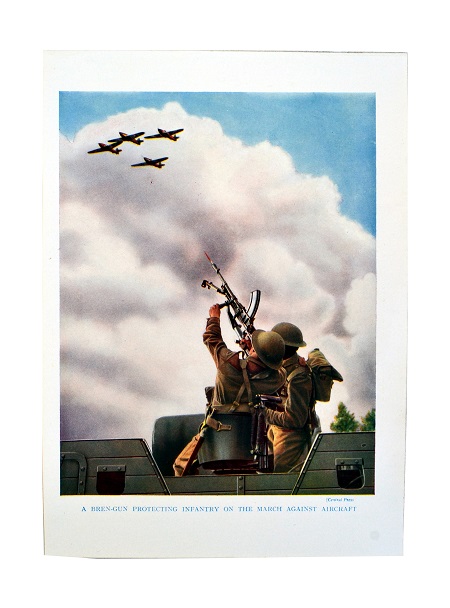By the time it was brought to England to take part in the trials,the ZB26 had already proved its worth during the now largely-forgotten Gran Chaco War, fought in Central America. The ZB26 offered a quick-change barrel along with the ability to be mounted on an optional tripod for sustained ground fire, which also converted into an anti-aircraft mount (AA). The ZB26 and later ZB27 (a technically more refined version) performed well in the trials and as of June 1935, the British Government and the Brno factory signed an agreement for the production of what was by then, due to ongoing joint development the ZGB33. Shortly afterwards, the gun was renamed Bren (BR from Bruno, EN from Enfield).

Production of the Bren commenced in 1937 and was divided into production batches (letter coded A1 - A9999, B1 and so on). Tooling costs at the Royal Small Arms Factory (RSAF) Enfield was estimated at £30,000 alone and for each gun produced, Brno would receive £3 in royalties. The British Expeditionary Force (BEF) of 1939 went to war equipped with their new LMG, including one spare barrel per gun, one sustained-fire tripod for every three guns and a Fixed Line Sight (FLS). The FLS is an interesting item of kit as even today there is no consensus as to actual numbers produced, or indeed the ratio of FLS to guns issued. Period photographs clearly show the gun team's number two with a binocular case attached the left side of their webbing; this was the standard transport medium for the FLS, although given that officially the FLS was dropped as an item of equipment prior to the BEF being deployed, it could equally simply house binoculars. Our example, one of only about 30 (as of writing) known to still exist, is the only one which we can confirm was definitely used during the conflict; having been recovered from the attic of a house in Belgium where a British unit were over-run by the advancing German forces in 1940. The sustained-fire tripod was soon seen, certainly in its AA configuration, to be a throwback to a simpler, less technically advanced age, as the speed of aircraft had increased spectacularly since it was first proposed.
When the BEF finally returned to UK shores following the Fall of France, out of the 30,000 Bren guns produced, some 26,000 were either unaccounted for (11,500) or unservicable leaving only 4000 examples to face down the pending German invasion. Our collection includes examples of a trials Brno-produced gun along with examples from the 26,000 and the 4,000. Following this the design had to be radically revised in order to both save production time and money.
